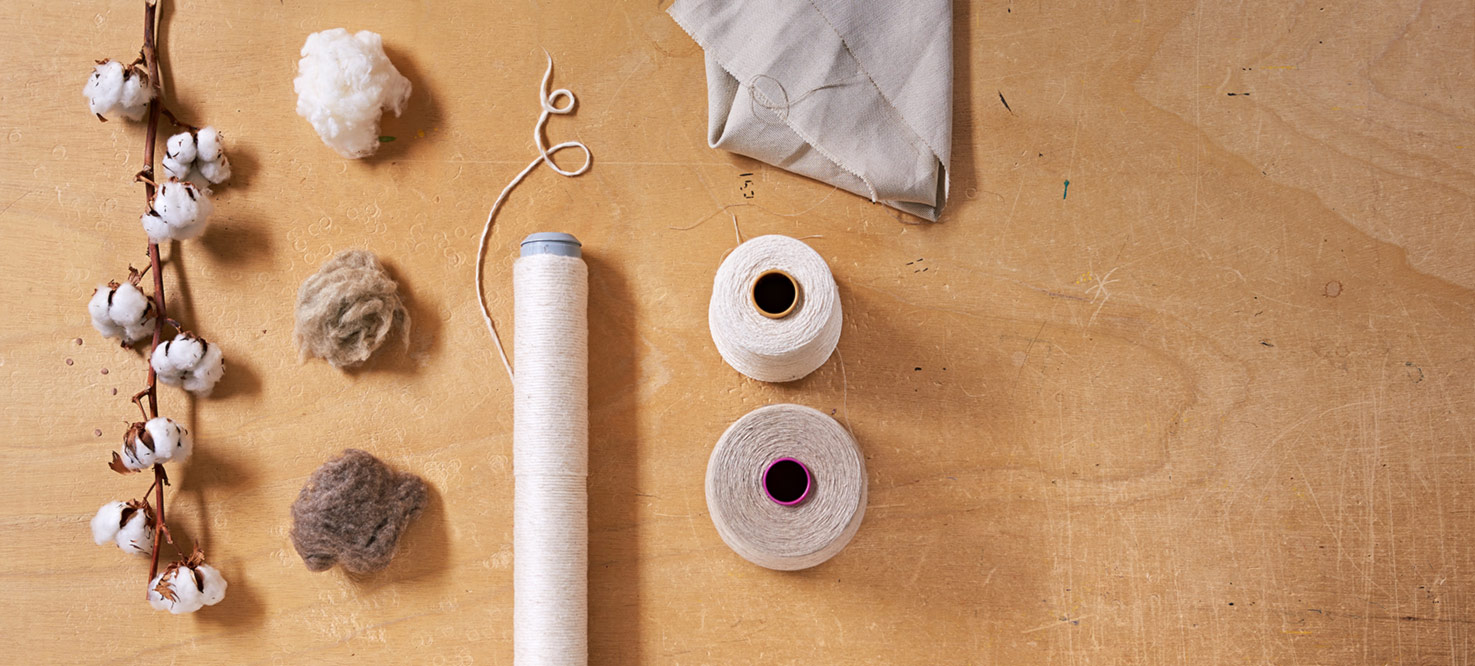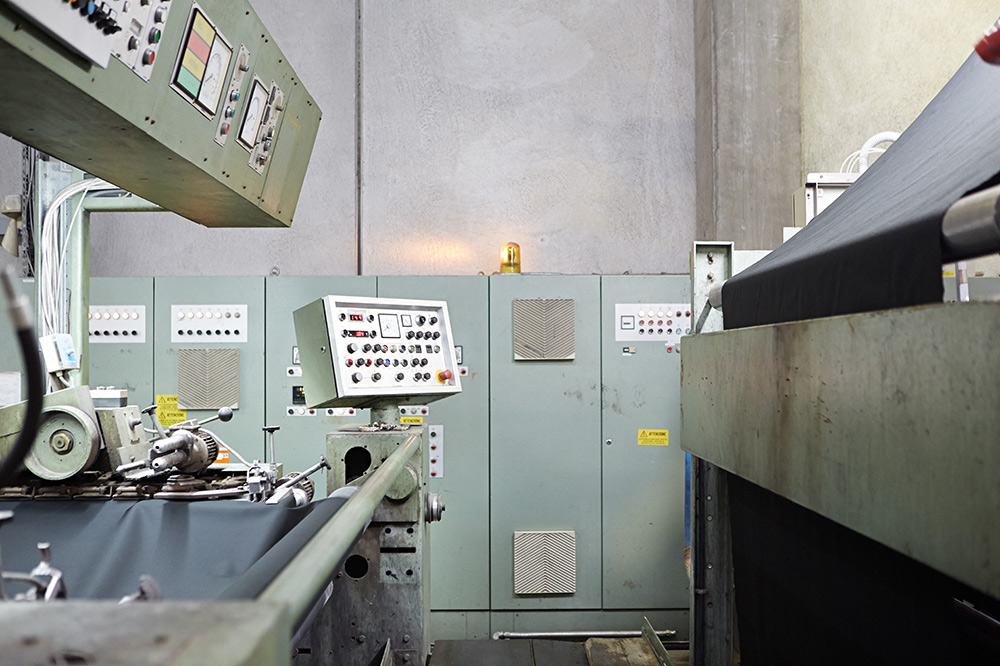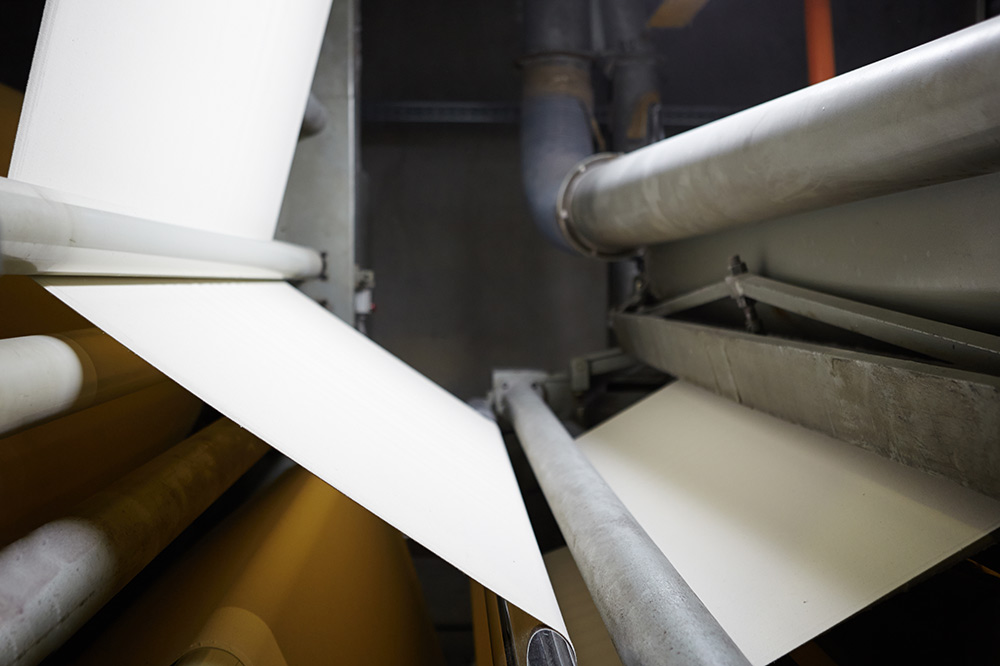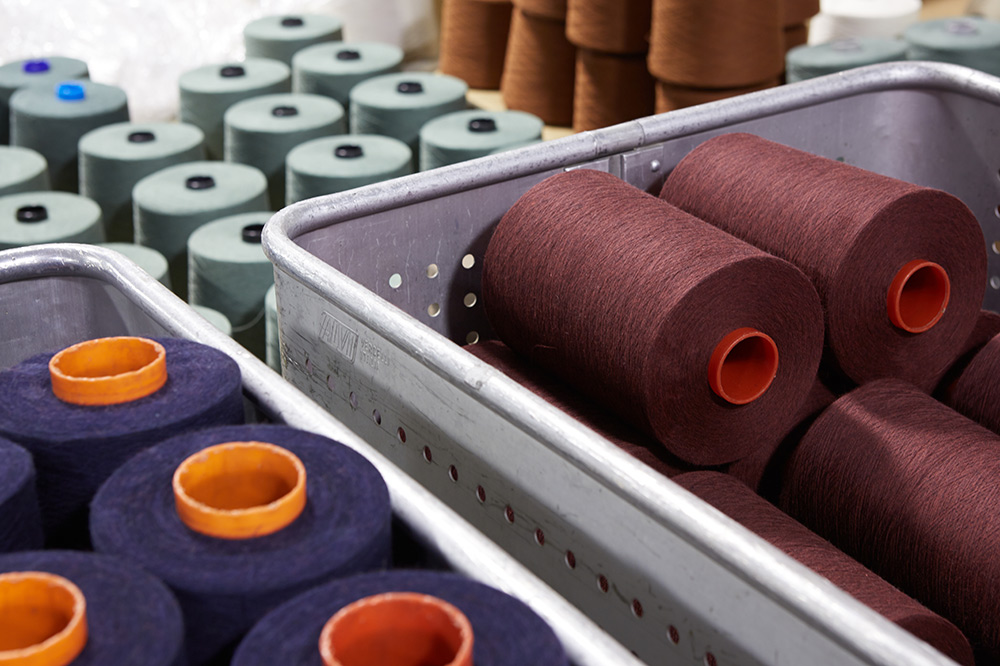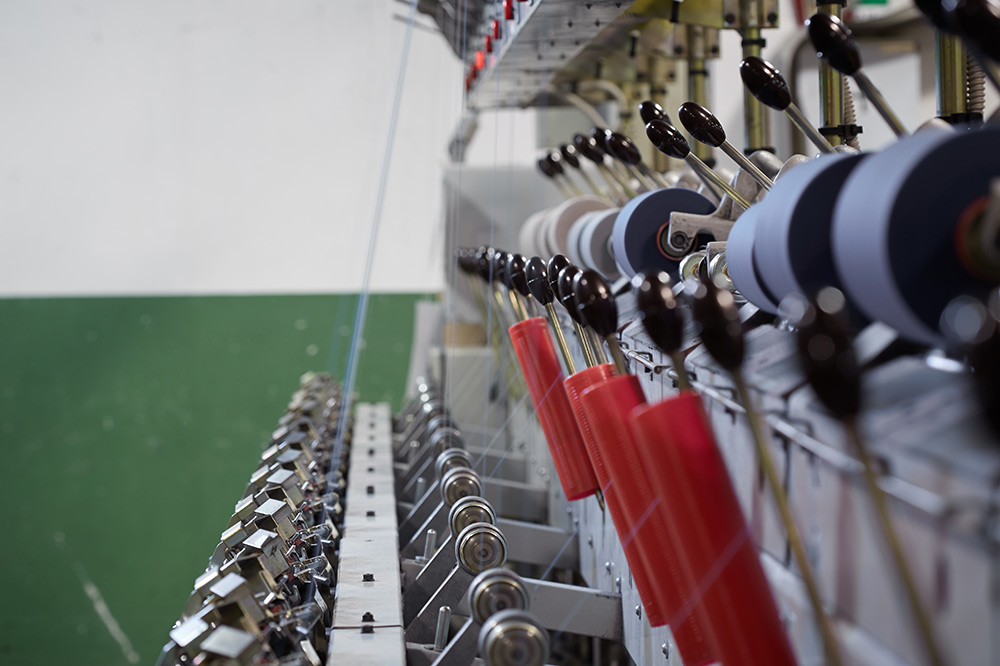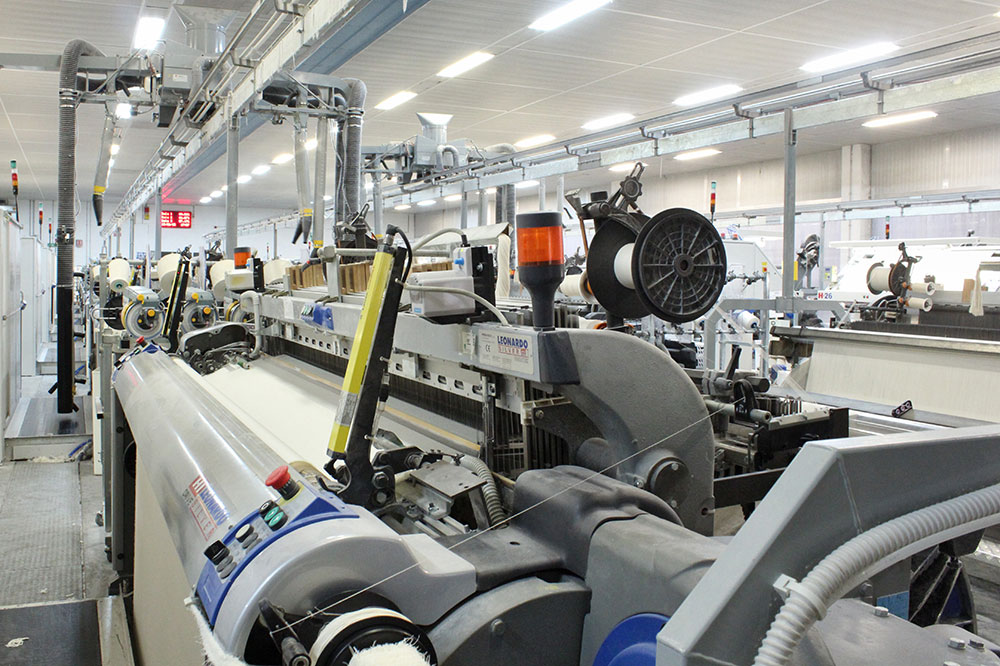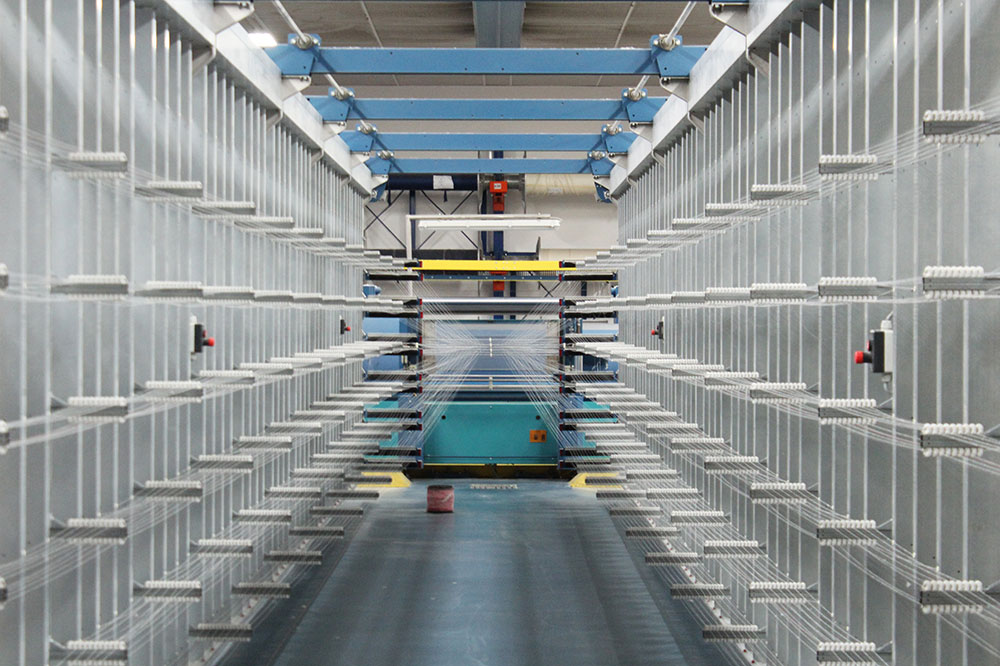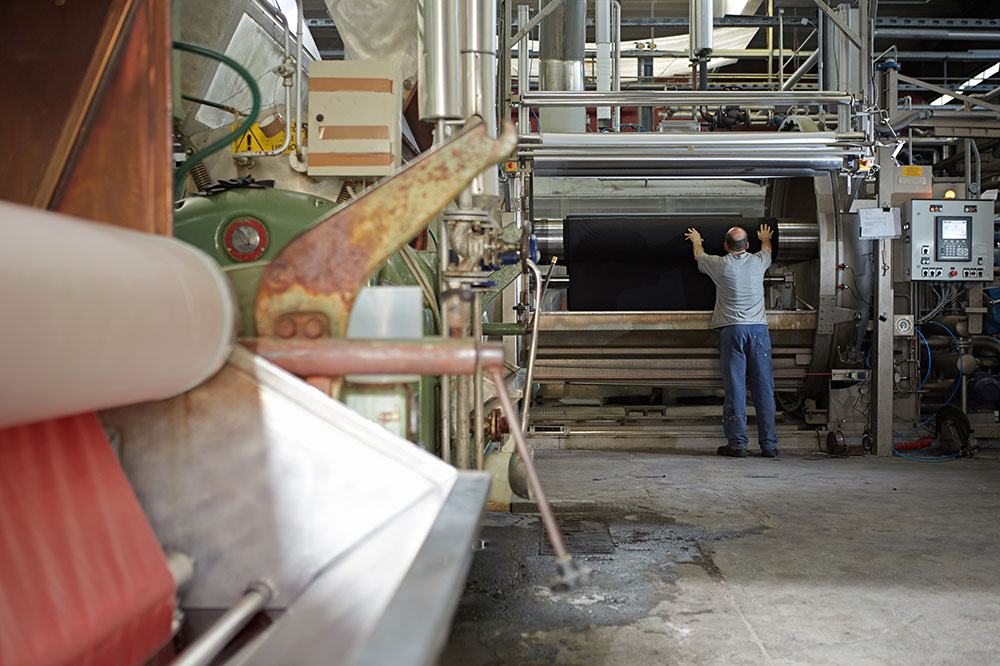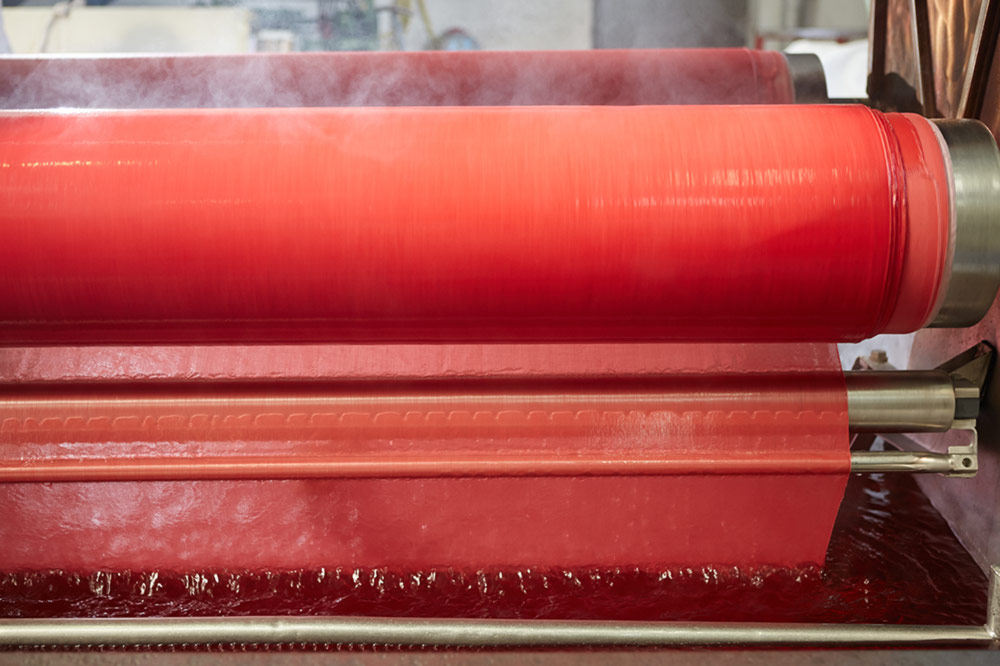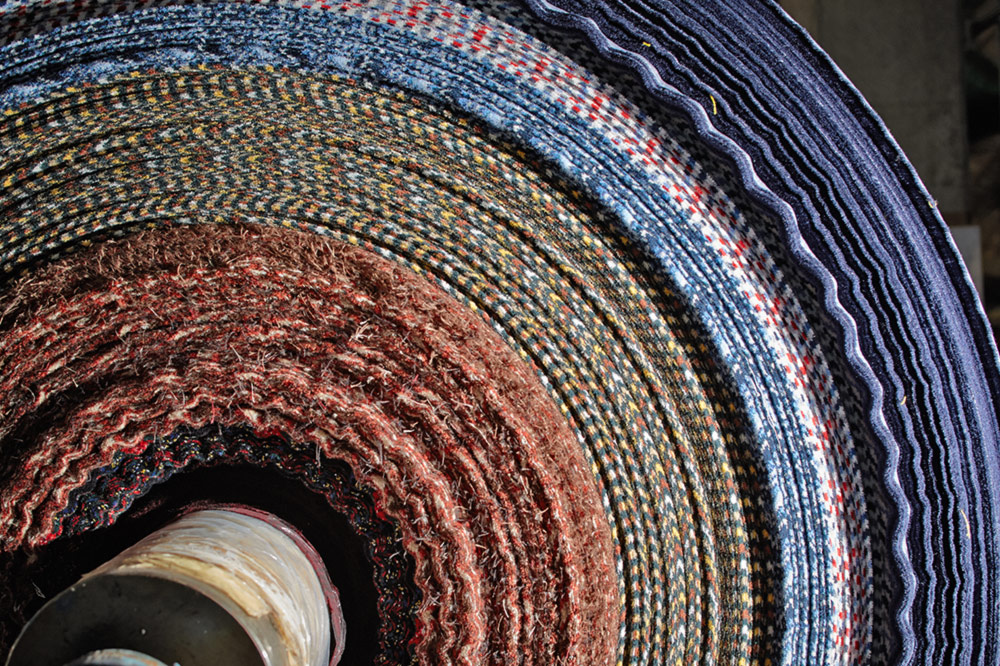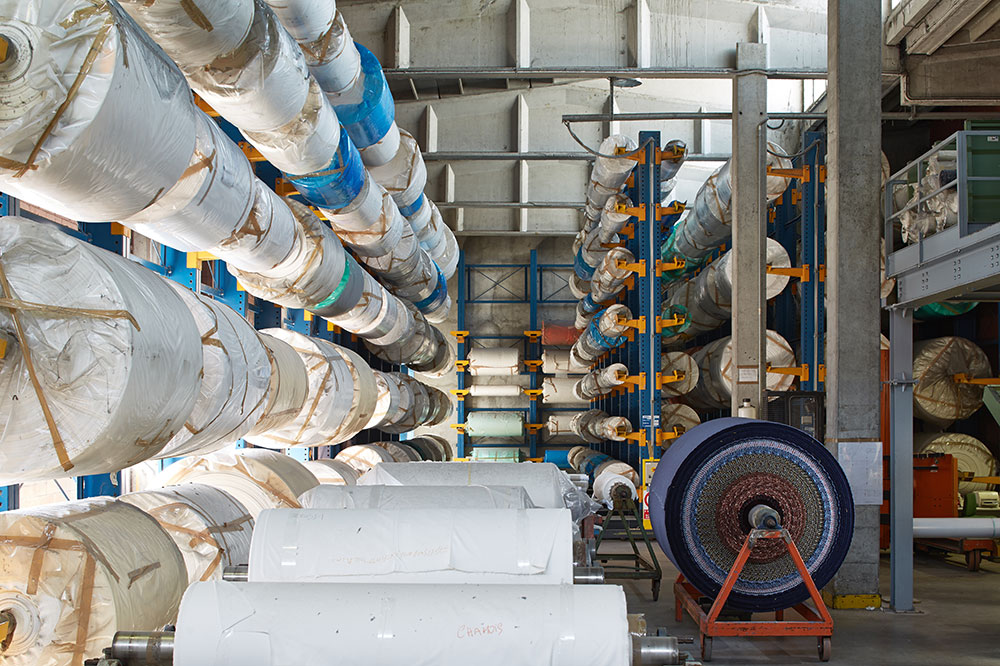Innovative technologies
used by the craftsmen of the fabric
The production area is the industrial heart of TBM and consists of four factories all located on the Italian territory, which produce exclusively for the companies of the Group.
The choice of keeping all production in Italy is the result of a clear and coherent vision that aims to defend the quality and uniqueness of the product.
Technological equipment of the latest generation is complemented by handcrafts specially created for exclusive productions, handled by qualified and experienced personnel. The pace of production is marked by the supervision of a timely and efficient programming, the beating heart of the entire group.
Technology is combined with the professional competence of the staff.
TBM Besnate
In 1947, there were old shuttle looms;
Now updated machineries go over 500 beats per minute,
are fully electronic,
flexible and reliable.
Besnate headquarters, the historical site of the company, is the brains behind the whole group.
There are the Directional Offices and research and development, along with one of the productions sites.
In 1947, there were old shuttle looms. Now in 2014 updated machineries go over 500 beats per minute, are fully electronic, flexible and reliable. With over 40 looms, 3 warpings and the twisting, at the Besnate headquarters are designed and developed all the collections of the Group, for about 2000 items per season.
This is possible thanks to the presence of twisting for fancy yarns, warping machines of the latest generation for sampling, automatic drawing-in frames, able to handle all types of yarn and armures.
The great flexibility of this production site is given by the specific equipment and the great preparation of the staff. The proximity of engineers and designers with the machines and the extensive yarn stock, allows to experiment with textures and designs, minimizing development time.
R & D department consists of 35 people: textile experts, designers and consultants. The different experiences of each allow a daily and creative exchange of ideas.
SGL
The spinning factory of TBM group.
Located in the province of Salerno, was built in 1992 and since then investments in machinery for combing and winding were continuous.
In recent years the company decided to quit much of the traditional production and specialize in the research and development. First major step taken in this direction was made in 2013, with the creation of an experimental hall for the production of specialty yarns. In a time where there are no more spinning mills in Italy, this makes it possible to differentiate the finished product, making it almost inimitable.
Tessitura di Ginosa
Born in 2005,
one of the most modern
textile mills existing.
Tessitura di Ginosa, founded in 2005, is one of the most modern textile mills existing.
The group’s decision to build this production facility was established by the need to increase production capacity and the will to keep production in Italy, in order to ensure service and quality.
The factory is absolutely independent, from the reception of the yarn up to the delivery and control of the raw fabric.
The laboratory controls all the yarn arrivals as well as the fabrics are tested after they are woven.
The facility is equipped with warping, weaving and bonding.
The weaving department is divided into 3 rooms to have optimal production in terms of temperature, humidity and pollution.
30% of energy demand is self-produced thanks to the photovoltaic system located on the roof of the production site.
Transportation weekly connects the plant with the Dyeing Factory of the Group.
The management system allows to monitor the production, meter by meter.
Varano Borghi
Home to the oldest textile company
currently operating in Italy
Varano Borghi factory was born in early 800, with the name of Cotton Mill Borghi Pasquale & Sons. In the years of greatest splendor was employing more than 2000 labours.
The choice of site location was not accidental: it was said that the flora of Comabbio Lake, from which they brought out the water to the dyeing factory, possessed a peculiar quality of algae giving to the fabrics a special touch.
In the old days there have been several owners, including Textile Texiloses, known for its great quality and style.
In 1985, Varano Borghi was purchased by TBM group, completely renewed and equipped to produce all types of cotton and linen fabrics.
The skills have been acquired through the integration of people and the purchase of machinery from leading companies in its field, from velvet to moleskin, from enzymes finishes to indigo dyeing. This acquisition process continues from year to year: in 2014 were installed over 15 new machineries, including a new line for rope dyeing.
At the same time, many machines were developed ad hoc or modified to fit specific needs. The flagship of the group is a special machinery for dyeing in piece the indigo unique in its kind.
The presence of this variety of machinery, allows a continuous research in terms of production and cycles are always different, for a unique finishing of the fabric as requested by the customers.
The great ambition of the Group about quality is epitomized by the creation in 2014 of a super equipped laboratory, that will come operative at Varano Borghi. Since the early months of 2015, it will be possible to run almost 100% of the tests requested by the worldwide market and all internal specifications.
Another important feature of Varano Borghi is sustainability.
In terms of energy, the requirements are met for the 15% by the photovoltaic panels and for the 85% by a gas turbine aeronautical type, from which the exhaust fumes are recovered and used in the form of steam in the production process.
The geographical area located in Varano Borghi is also subject to particularly strict environmental legislation, being it part of the “Brabbia Marsh”. The ecological values are significantly lower than the national average and the controls very frequent. The group’s attention to these parameters is continuous.

